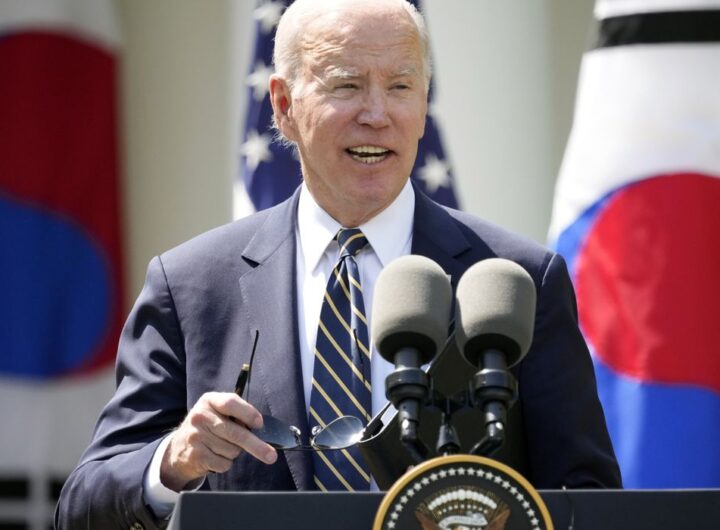International goals to limit global warming to 1.5 degrees Celsius (2.7 degrees Fahrenheit) officially for life support. A UN-supported climate scientist panel warned in a new report released Monday that the world might be on track for warmer more than 3 degrees Celsius – twice the Paris agreement target – in changes that will resiscover the community and the lives of the planet.
The latest report from the Intergovernmental Panel on climate change comes after years of net-zero promise by the national government, cities, businesses and investors, and it sounds greatly warned on emissions of greenhouse gas emissions that are still uncontrollable pushing to the record level. The focus of this report, the third released since August 2021, is in a broad technology warehouse, knowledge, and wealth that is not enough deployed in an effort to ensure a proper climate in the future.
Time to limit heating is very short. Greenhouse gas pollution must peak “no later than 2025” to keep the target stay, IPCC scientists write. Based on the national appointment carried out before Glasgow’s climate negotiations last November, emissions in 2030 “will make the possibility of heating more than 1.5 degrees Celsius during the 21st century,” the author concluded. It made the loss of the first goal of the Paris agreement in the lives of many people now alive.
“This is not fiction or excessive,” UN Secretary General Antonio Guterres said in a statement. “That is what Science said to us will be produced from our current energy policy.”
As bad as that sounds, scientists in recent years have reduced the likelihood of much higher increases, and the report makes clear that solutions are available or foreseeable in virtually every sector:
- There are cost-effective carbon-cutting opportunities that together could meet half the 2030 emissions target. Global GDP would be “a few percent lower” in 2050 than on the current trajectory, not accounting for the benefits of climate damage avoided.
- At least 18 countries have proven that it’s possible to reduce greenhouse-gas emissions for a decade running – in some cases up to 4% a year and potentially in line with a 2 Degrees Celsius temperature rise.
- Solar and wind costs fell 85% and 55% between 2010 and 2019, making them now cheaper than fossil-fuel-powered electricity generation in many places.
- Carbon-free and low carbon technologies, including nuclear and hydroelectric power, made up 37% of the electricity generated globally in 2019.
- Transportation, which caused 23% of CO2 emissions from energy in 2019 (16% from road vehicles alone) is poised for change, with battery prices dropping 85% the last decade. Low-emitting alternatives to the production of industrial materials are only in pilot or early-commercial stages.
- The report heralds “digitalization” – robotics, AI, the internet of things – as a powerful way to increase energy efficiency and manage renewable power.
Parade Report number shows how far countries are enough to handle climate change. Greenhouse gas emissions in 2019 peaked at the new highest 59 billion metric tons. Carbon emissions from 2010 to 2019 are equivalent to around 80% of all space remaining at 1.5 degrees Celsius “carbon budget,” the accounting used by scientists to estimate how many more atmospheric pollution can heat through the paris agreement line of 1.5 degrees Celsius or 2 degrees Celsius. Emission intensity, or energy use per GDP, fell 2% in the past decade, but the increase was overwhelmed by increasing GHG pollution.
Emissions from existing fossil fuel infrastructure will encourage a climate outside the blade under the Paris Agreement, a plural effect has been plain with 1.1 degrees Celsius heating above the pre-industrial average. Avoiding that fate, scientists concluded, meaning trillion dollars in plans and infrastructure that are too dangerous to continue to operate, unless the technology appears to capture and issue their emissions.
The peak in global emissions before 2025 will require an early investment and the rate of change is faster than the peak later “but bringing long-term benefits for the economy,” above the benefits of climate damage avoided, the author writes. As standing, financing for strategies to prevent climate change must grow three to six times above the current level to maintain the purpose of 1.5 degrees Celsius in playing.
Policy does not help as much as possible. Only 53% of emissions are included in the climate law, and only 20% fall under the carbon price regime some of the approaches “are not enough to achieve deep reduction,” the report.
In a special 2018 landmark report at 1.5 degrees Celsius heating, the IPCC found that it had the opportunity to even remain below the target, the world needs to divide the two levels of emissions in 2010 in 2030 and eliminate it in 2050. This pushed it “zero in 2050” promised Now common among governments, companies and investors. The new report updated the numbers, by saying that all greenhouse gases, not only CO2, must fell 43% below their 2019 levels in 2030 and 84% in 2050. For the probability of two-thirds of the Paris Agreement Meeting 2 degrees Celsius , all gases must be cut by 27% below the 2019 level in 2030 and 63% in 2050.


 US Man Guns Down 5 Neighbours, They Had Protested His Shooting Practice
US Man Guns Down 5 Neighbours, They Had Protested His Shooting Practice  Fatima Bhutto, former Pakistan PM Benazir Bhutto’s niece, marries in intimate ceremony
Fatima Bhutto, former Pakistan PM Benazir Bhutto’s niece, marries in intimate ceremony  Two US Army Helicopters Crash During Alaska Training Flight
Two US Army Helicopters Crash During Alaska Training Flight  Biden Says Nuclear Attack By North Korea Would Result In “End Of Regime”
Biden Says Nuclear Attack By North Korea Would Result In “End Of Regime”  With 72-hour ceasefire in place, India scrambles to evacuate citizens from Sudan
With 72-hour ceasefire in place, India scrambles to evacuate citizens from Sudan  To “Meet Jesus”, 47 Cult Members In Kenya Allegedly Starve To Death: 5 Facts
To “Meet Jesus”, 47 Cult Members In Kenya Allegedly Starve To Death: 5 Facts  What does the remote health kiosk measure?
What does the remote health kiosk measure?